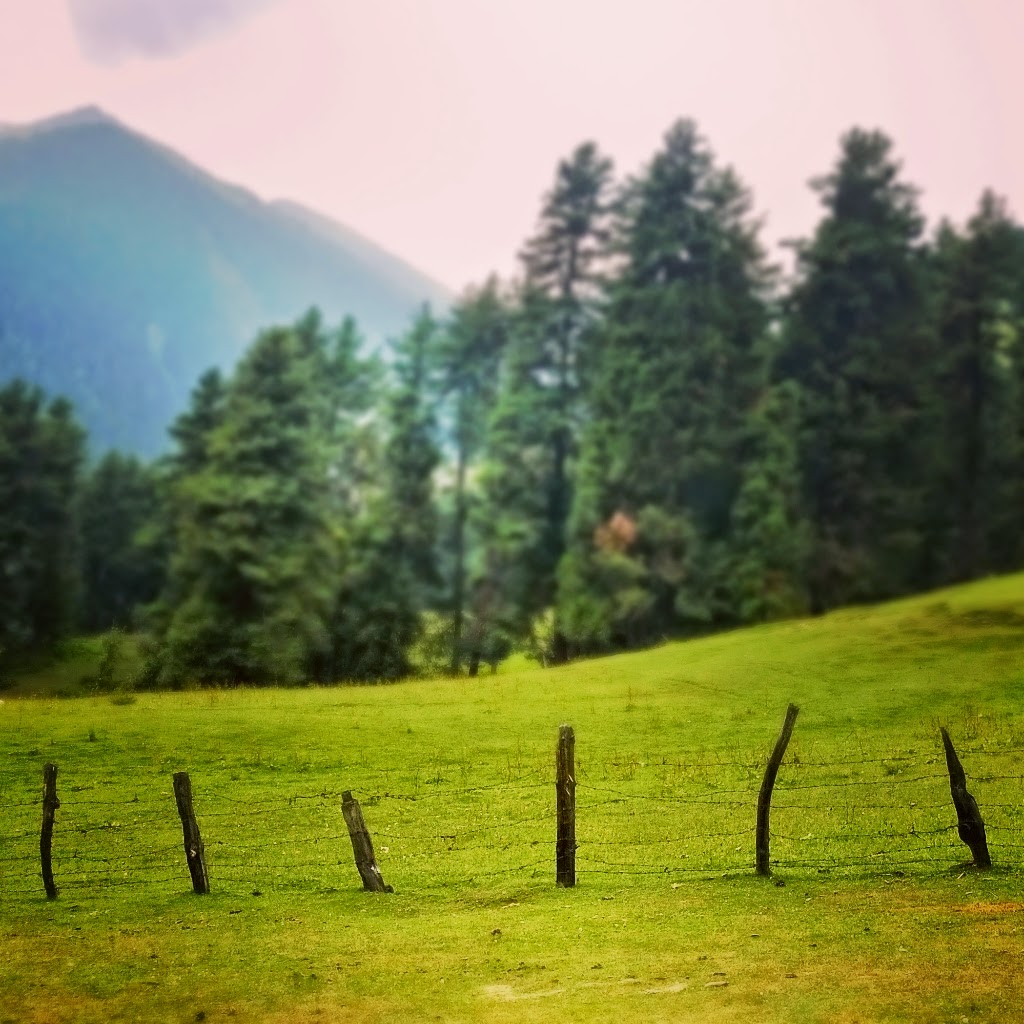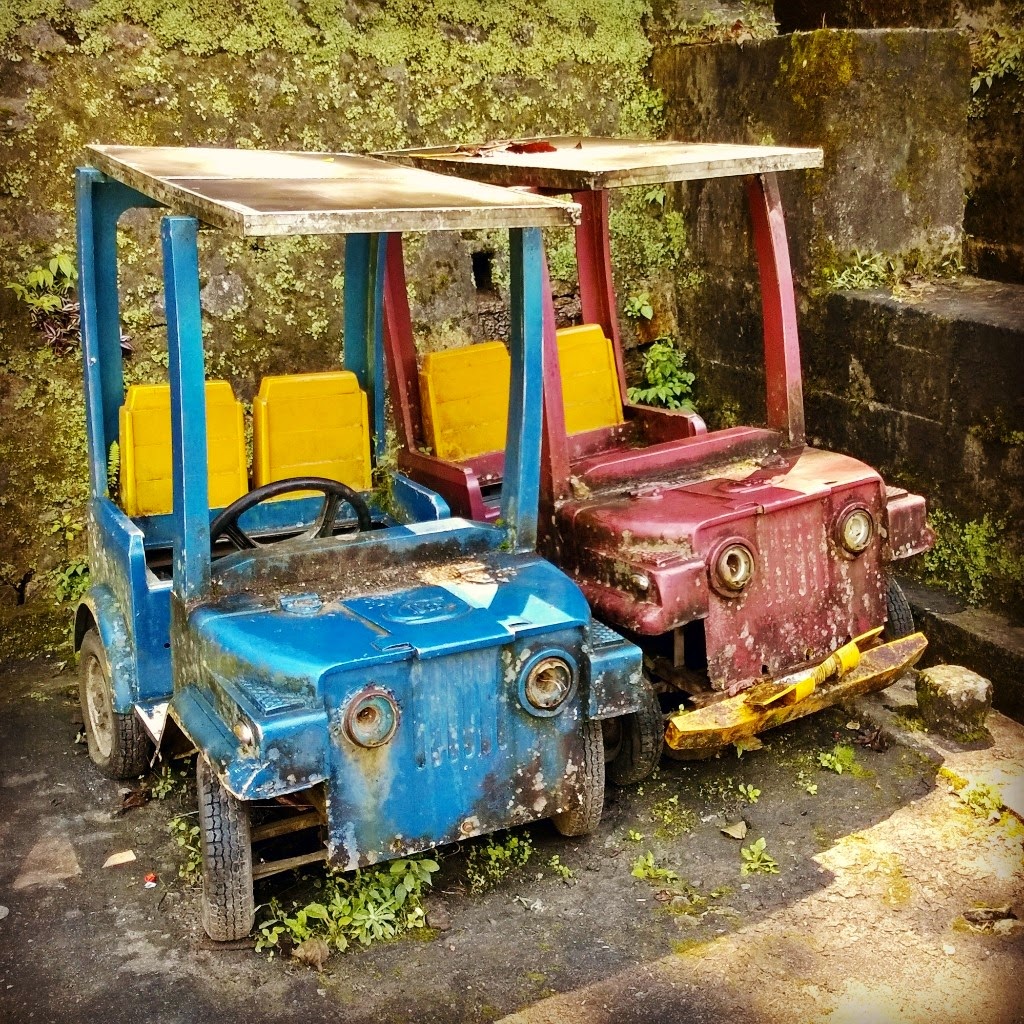A dozen kilometres away from Pahalgam, Aru makes for a pleasant car ride on a winding hillside road that mostly runs upstream, never too far from the Lidder. This scenic meadow is a tranquil spot often upstaged by the touristy Betaab valley, named after the Bollywood hit that was filmed there three decades ago. But locals prefer Aru for weekend getaways.
We amble past grazing ponies and pick a spot to rest with pine trees and snow-capped peaks in the distance, while the tin roofs in the village below glint silver in the August sun. The conversation turns to Kashmir's troubles (and it didn't take into account the devastating flash floods a few weeks after our trip).
My Kashmiri friends, both journalists, describe their lives growing up in Srinagar - the narrative is dispassionate, but there are occasional flashes of smouldering emotion. I look at the wired fencing behind us (put up illegally by nomadic goatherds); it's conspicuous in the landscape. A microcosm of Kashmir.
VOYAGE TO TULIAN
Early next morning, Sankalp and I set out for Tulian lake at an altitude of 11,000 feet (3,350 metres). We were riding ponies. Sankalp was on Chetak while eight-year-old Raja, older and more experienced, was chosen to bear my heavier frame. Munir and Shabbir, their handlers, walked with us.
The ascent was easy at first, aided by breathtaking vistas of the Himalayas. We passed the meadow of Baisaran, which is where most tourists turn back. The never-ending trail headed for what looked like a sheer cliff, but we didn’t stop. The handlers prodded the ponies, but about halfway up the narrow zigzag trail, Raja struggled to cross a jutting rock. I dismounted gladly; the prospect of hurtling to my death didn’t appeal to me.
We later ran into another group of pony riders, a Gujarati family settled in Leeds, England. And an Australian - a weatherbeaten, sinewy old man who had been trekking alone for two days, and easily overtook us on foot.
When we reached the point where the ponies could go no further, it was a welcome break. My buttocks hurt and I was desperate to walk. But then the guide pointed up, towards our destination a kilometre or so away. Only a couple of glaciers and a sea of boulders to cross. My heart sank at this last-minute addition of obstacles to what was becoming a ‘Hunger Games’ quest. To add to our troubles, the Australian trekker returned, saying the first glacier was too dangerous to cross. But everyone was going on ahead, with the exception of a woman with a sprained ankle.
I straggled behind the rest, lost my footing several times on the glacier but eventually slithered across. I lost sight of Sankalp, who had been bounding like an antelope from one boulder to the other. It was getting colder by the minute and I was wearing a T-shirt, but thankfully the sun was still shining brightly. But I lost track of time, and was struggling to place one foot above the other.
Tired, cold and irritated, I was ready to give up. And to my relief, so was a fellow trekker. A sullen teenager from the Gujarati family had thrown in the towel, and was leaning on a boulder, staring into nothingness. His dad offered words of encouragement and eventually, the boy struggled to his feet and pressed onwards.
I sighed. If he could do it, I couldn't stay behind. Damn this Tulian trip. Sankalp got a few mental curses, for not gauging how difficult this trip would be for all my 83 kilos. I brushed the dust off my jeans and trudged on. After what seemed like an hour, I reached the summit for my first glimpse of why this expedition had been worth it.
I did not dip my toe in the lake. One of our pony handlers said the water was poisonous; legend has it a Hydra-like serpent dwells within its blue depths. I don’t believe in monsters; I was just too tired. So I rested on a boulder, clicked and posed for photos, and gathered energy for the descent.
I wouldn't have believed it, but I soon realized going back down was the hard part. I kept slipping on the boulders and small stones that littered the path, landing with a rattling thump each time. Sankalp, who has good climbing genes (his family is from hilly Nainital), came to my aid and held on to my arm as I slowly made my way down the sea of boulders, and past the twin glaciers.
Near where our ponies were grazing, a Bakharwal (a nomadic tribe of goatherds) woman took us to her hut for refreshments. I don’t drink tea, but even I couldn’t resist a glass of steaming, milky tea that day. The wrinkled old woman said she had been serving trekkers to Tulian during the climbing months for as long as she could remember. Outside, a few Bakharwal children are playing with a goat and I was going to have a sense of déjà vu at Thajiwas glacier near Sonamarg, a trip we were to undertake a few days later.
But I wasn't quite in the home stretch yet. As the afternoon wore on, our guides lost track of the trail and blundered further into the forest. As the slope was very steep, I preferred to dismount and let the ponies go on ahead. As Sankalp and the pony handlers quickly disappeared down the hill, I straggled behind. I took tentative steps and found gravity was working just fine. Losing my footing, I slid down the hill, grabbing nettles to slow my fall. I steadied myself and looked around, trying to map the best way down. But I slipped again, turning over on my back and sliding. Pebbles and sticks tore into my limbs like razor blades till I caught hold of a low branch. My head was aching, there were burrs stuck to my midriff and there didn’t seem any part of my body that wasn’t bruised or sprained.
I was just entertaining dark thoughts when I heard Sankalp and Munir call out, trying to figure out my location. I reply, relieved that I wasn’t going to meet my maker after all. Someone told me to hurry up, there are bears in the area and they come out in the evening. That did it for me. I stood up, slowly digging my feet into the mud and shuffled along in a zigzag line. Munir caught up with me, grasped my arm and helped me down, steadying me whenever I slipped, my legs flailing out under me. They had found the trail again and I climbed on to the pony, dead tired and aching all over, but knowing that within a few hours I’ll be at the hotel, where I hoped to crawl into bed after rubbing pain reliever cream all over. And I did just that. I felt much better the following morning and the Tulian aches and sprains had healed by the end of the Kashmir trip.
After our stints in Srinagar and Pahalgam, Sankalp and I spent the rest of the week in Gulmarg, Sonamarg and Manasbal; the first two are regular tourist haunts. Gulmarg has its gondola car ride and overpriced "self-service" eateries where employees ask for tips. Sonamarg has its pony ride and sledding on the glacier. But Manasbal is somewhat off the tourist trail, with an army camp and a village adjacent to a tranquil water body.
The ruins of Jharokha Bagh overlook Manasbal lake. Four centuries ago, Mughal Empress Nur Jahan spent several summer hours here. There's something to be said for the beauty and quiet of Manasbal, still unfrequented by most tourists traipsing across Kashmir. Were she alive today, I can just about imagine Nur Jahan curled up in her terraced garden, immersed in a book of Persian poetry on her Kindle, occasionally lifting her regal gaze towards the placid waters.
(Photos taken on my Nokia Lumia 925 phone. Some photos have been Instagrammed)
NOTES FROM A KASHMIR TRIP
Part 1 - Srinagar, flatbread, and the Bengali connection
Part 2 - The German flag, Cupid, and Naseeruddin Shah






























































